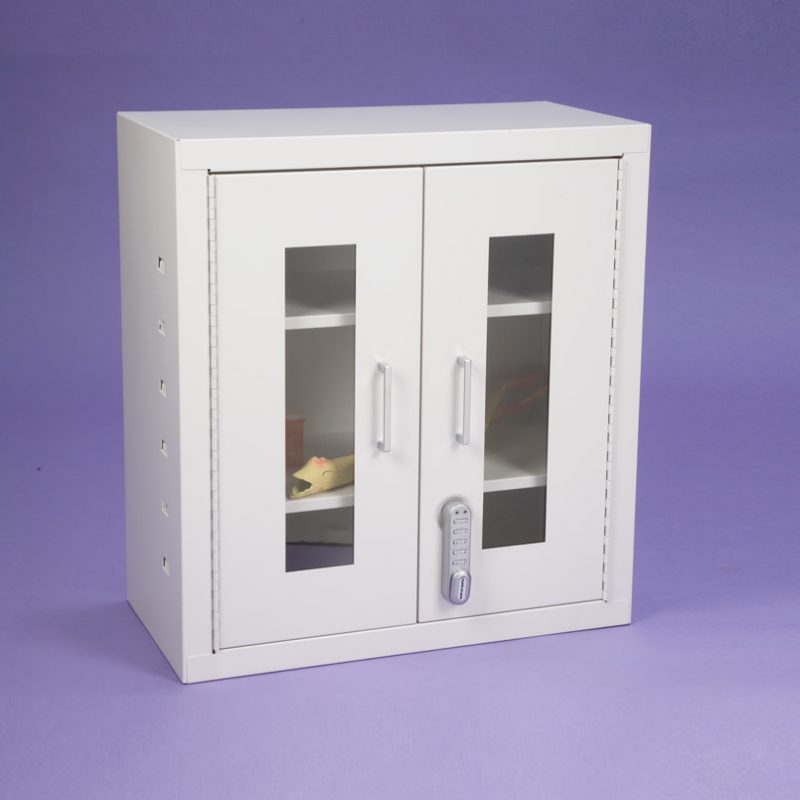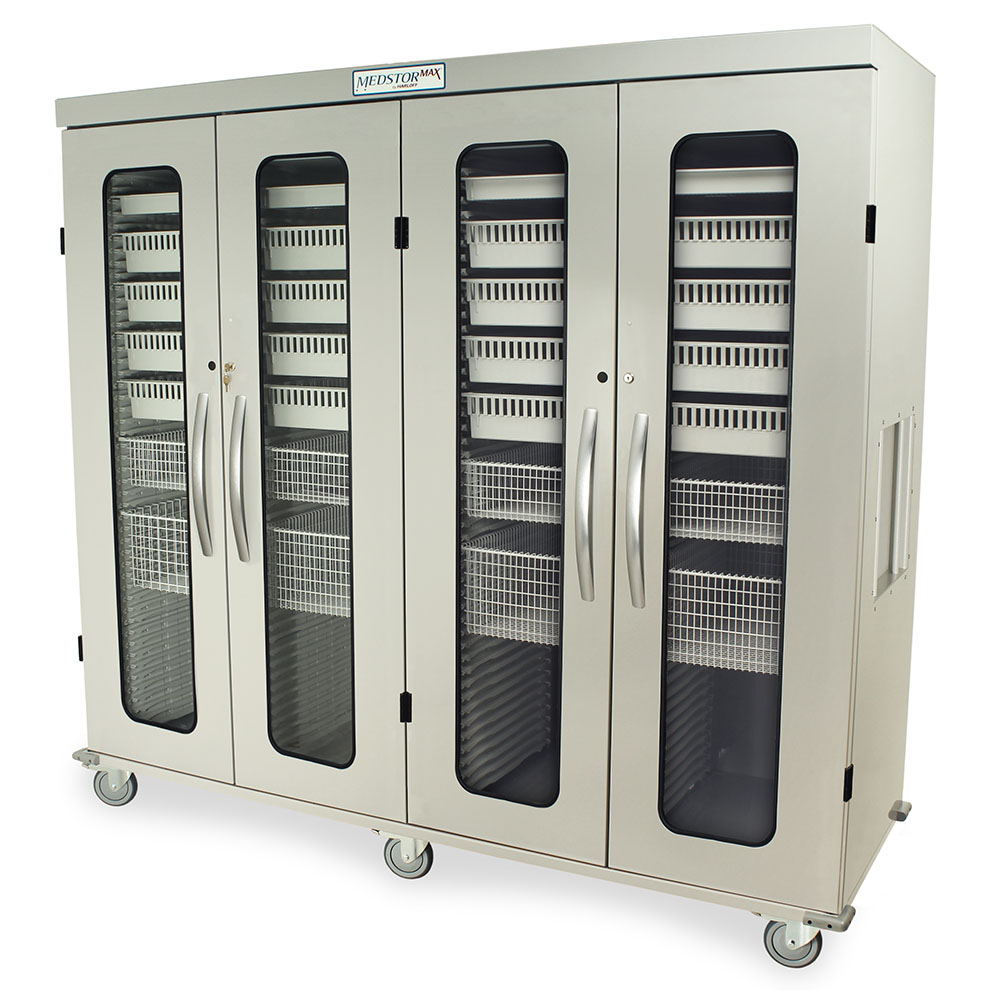Types of Locking Medical Storage Cabinets

Medical storage cabinets are essential in healthcare settings for ensuring the safe and secure storage of various medical supplies, equipment, and patient records. These cabinets come in various types, each designed for specific purposes and offering different levels of security and functionality.
Medication Storage Cabinets
Medication storage cabinets are specifically designed for storing pharmaceuticals, ensuring proper handling and controlled access. They typically feature:
- Multiple compartments: Separate compartments allow for the organization and storage of different types of medications, promoting efficiency and preventing cross-contamination.
- Lockable doors: These cabinets are equipped with sturdy locking mechanisms, preventing unauthorized access to medications and maintaining patient safety.
- Adjustable shelves: Adjustable shelves allow for customization based on the size and quantity of medications being stored, optimizing space utilization.
- Temperature control: Some medication storage cabinets are equipped with temperature control features, ensuring the proper storage conditions for sensitive medications.
- Security features: These cabinets may incorporate additional security features like alarm systems, keycard access, or electronic monitoring to further enhance security.
Sharps Storage Cabinets
Sharps storage cabinets are designed for the safe disposal of sharp medical instruments, such as needles, syringes, and scalpels. These cabinets typically feature:
- Secure containers: Sharps cabinets are equipped with puncture-resistant containers, preventing accidental needle sticks and ensuring the safe disposal of sharps.
- Locking mechanisms: These cabinets are secured with lockable doors or lids, preventing unauthorized access and accidental disposal of sharps.
- Biohazard labels: Cabinets are clearly labeled with biohazard symbols, indicating the presence of potentially infectious materials and promoting proper handling procedures.
- Color-coded systems: Some sharps cabinets utilize color-coded systems to distinguish between different types of sharps, further enhancing safety and organization.
Patient Records Storage Cabinets
Patient records storage cabinets are designed to securely store sensitive patient information, ensuring confidentiality and compliance with healthcare regulations. These cabinets typically feature:
- Fire-resistant construction: Cabinets are often constructed with fire-resistant materials, protecting patient records from damage in case of fire.
- Locking mechanisms: Secure locking systems restrict access to patient records, ensuring confidentiality and compliance with privacy regulations.
- Compartmentalization: Cabinets may feature multiple compartments or drawers for organizing and storing patient records, promoting efficient retrieval.
- File-tracking systems: Some cabinets may include file-tracking systems, facilitating easy retrieval of specific records.
Other Types of Medical Storage Cabinets
In addition to medication, sharps, and patient records, other types of medical storage cabinets are used for storing various medical supplies and equipment. These include:
- General medical supply cabinets: These cabinets are used for storing a wide range of medical supplies, including bandages, gauze, antiseptic solutions, and other general medical equipment.
- Instrument storage cabinets: These cabinets are designed to store surgical instruments and other medical equipment, ensuring proper organization and sterilization.
- Emergency supply cabinets: These cabinets are stocked with emergency supplies, such as first-aid kits, oxygen masks, and other essential equipment for handling medical emergencies.
Security Features of Locking Medical Storage Cabinets

Locking medical storage cabinets play a crucial role in safeguarding sensitive medical supplies and patient information. They provide a physical barrier against unauthorized access, ensuring the integrity and safety of the contents. To achieve this, various security features are incorporated into these cabinets, each with its own strengths and weaknesses.
Key Locks
Key locks are the most common type of lock found in medical storage cabinets. They utilize a physical key to open the cabinet, relying on a mechanical mechanism to engage and disengage the locking mechanism.
- Operation: When the key is inserted into the lock cylinder, the key’s grooves align with the tumblers inside the cylinder. This alignment allows the locking mechanism to disengage, permitting the cabinet to be opened.
- Strengths: Key locks are relatively inexpensive and simple to use. They offer a basic level of security, especially when combined with high-quality locks and keys.
- Weaknesses: The primary weakness of key locks is their susceptibility to key duplication and theft. If a key is lost or stolen, the security of the cabinet is compromised. Additionally, key locks can be easily bypassed by skilled individuals using lock picking tools.
Combination Locks, Locking medical storage cabinet
Combination locks, also known as dial locks, utilize a series of numbers or letters to open the cabinet. They rely on a mechanical mechanism that is activated by setting the combination correctly.
- Operation: To open a combination lock, the user must rotate the dial to align the correct sequence of numbers or letters. This alignment engages a mechanism that releases the lock.
- Strengths: Combination locks offer a higher level of security than key locks, as they do not rely on a physical key that can be lost or duplicated. They also provide greater control over access, as only individuals who know the combination can open the cabinet.
- Weaknesses: Combination locks can be more challenging to use than key locks, particularly for individuals who have difficulty remembering the combination. They are also susceptible to brute-force attacks, where an attacker systematically tries different combinations until the correct one is found.
Electronic Locks
Electronic locks utilize electronic components and a power source to control access to the cabinet. They often incorporate advanced features like keypads, card readers, or biometric sensors.
- Operation: Electronic locks typically require the user to enter a code, scan a card, or provide a biometric identifier. This input is then verified by the electronic system, and if it matches the authorized information, the lock disengages, allowing access.
- Strengths: Electronic locks offer a high level of security and flexibility. They can be programmed to restrict access to specific individuals or groups, and they can be easily reprogrammed to accommodate changes in personnel or access permissions. They also provide an audit trail of access events, allowing administrators to track who has accessed the cabinet and when.
- Weaknesses: Electronic locks can be more expensive than key or combination locks. They also rely on a power source, which can be a potential vulnerability if the power is interrupted. Additionally, electronic locks can be susceptible to hacking or tampering, requiring careful installation and maintenance.
Biometric Access Control
Biometric access control utilizes unique biological characteristics to authenticate users. This can include fingerprint scanning, facial recognition, or iris scanning.
- Operation: Biometric locks scan a user’s biological characteristic and compare it to a stored database of authorized individuals. If there is a match, the lock disengages, granting access.
- Strengths: Biometric access control offers the highest level of security, as it is extremely difficult to duplicate or forge a person’s unique biological characteristics. It also provides a high level of convenience, as users do not need to remember codes or carry keys.
- Weaknesses: Biometric access control systems can be expensive to implement. They also require careful calibration and maintenance to ensure accuracy and reliability. Additionally, there are concerns about privacy and data security, as biometric information is sensitive and could be misused.
Locking medical storage cabinet – Locking your medical storage cabinet is a good idea, but let’s be honest, sometimes you just want to throw everything in a big, gray bin and call it a day. If you’re looking for a more organized approach, check out these gray storage cabinets with doors.
They’re like the grown-up version of your childhood toy box, but with a lock to keep the curious (and possibly clumsy) fingers away.
Locking a medical storage cabinet is all well and good, but what if your meds are so numerous they need their own personal storage unit? Enter the keter tall plastic storage cabinet , the ultimate solution for keeping your vitamins, bandages, and cough syrup organized.
Just make sure to keep it in a safe spot, because let’s face it, you don’t want your neighbors raiding your personal pharmacy!